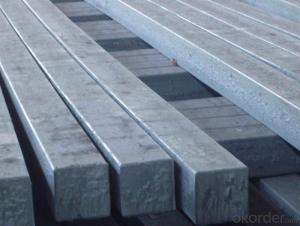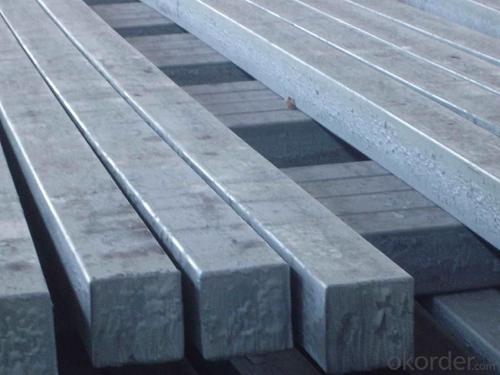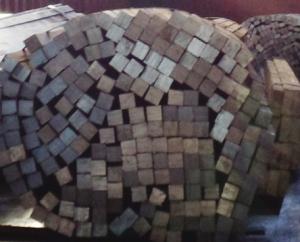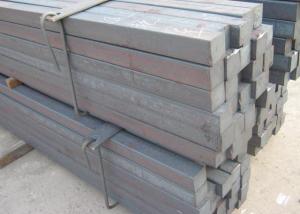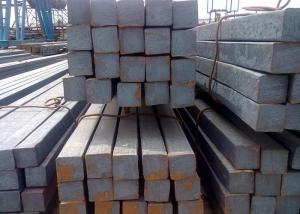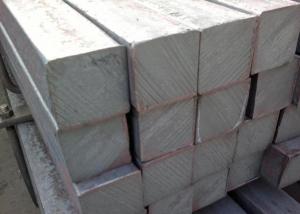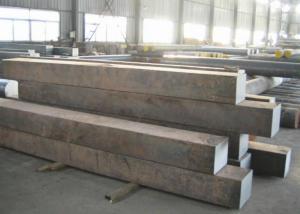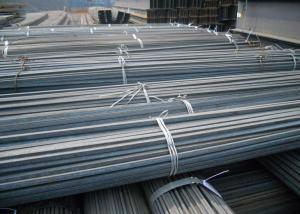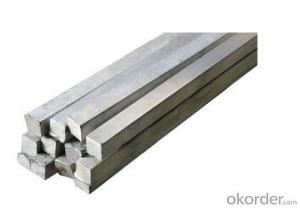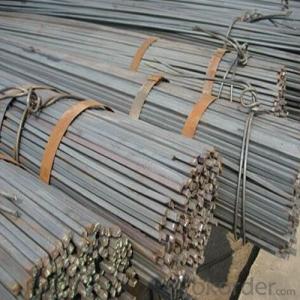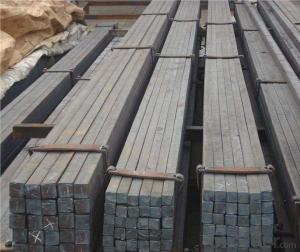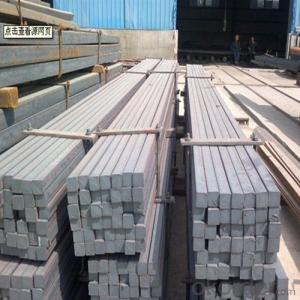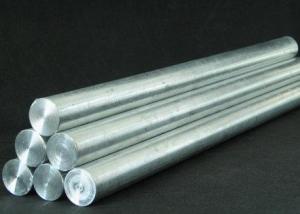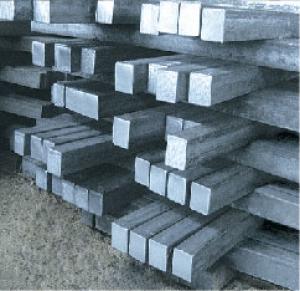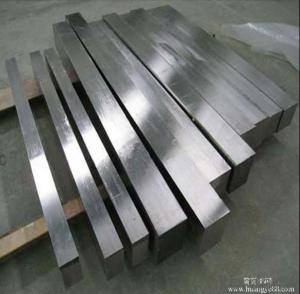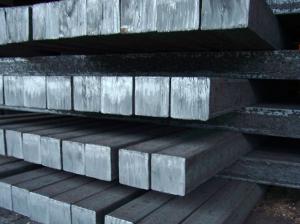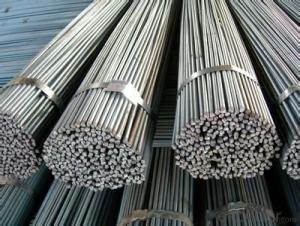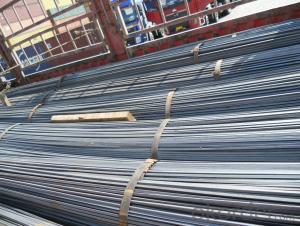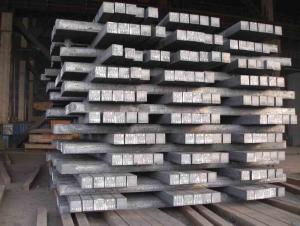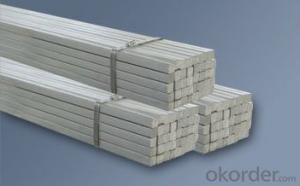Retangular And Square Steel Bar As Prime Material
- Loading Port:
- China main port
- Payment Terms:
- TT OR LC
- Min Order Qty:
- 25 m.t.
- Supply Capability:
- 10000 m.t./month
OKorder Service Pledge
OKorder Financial Service
You Might Also Like
Product Description
There are two types of Square Bar, one is hot rolled square bar and other one is cold drawn square bar. Our principal products is hot rolled square bar. We dedicate to products with material Q195 and Q235. We offer products with high quality and low price.
Specifications
-Standard: GB,
-Grade: Q195/Q235 or equivalent.
-Chemical Composition:
Standard | Grade | Element (%) | ||||
C | Mn | S | P | Si | ||
GB | Q195 | 0.06~0.12 | 0.25~0.50 | ≤0.050 | ≤0.045 | ≤0.30 |
GB | Q235B | 0.12~0.20 | 0.30~0.70 | ≤0.045 | ≤0.045 | ≤0.30 |
-Mechanical Properties:
Mechanical Properties | Grade | Steel diameter(mm) | |||
≤16 | 16~40 | 40~60 | 60~100 | ||
Yield Point Δs/MPa | Q195 | ≥195 | ≥185 | - | - |
Q235 | 235 | 225 | 215 | 205 | |
Tensile Strength | Q195 | 315~390 | |||
Q235 | 375~500 | ||||
Elongation δ5% | Q195 | ≥33 | ≥32 | - | - |
Q235 | 26 | 25 | 24 | 23 | |
Measures (Big measures):
(Section of Hot-rolled Square Steel Bar)
-Length of a side and Theoretical weight of Square Bar (Big measures).
Length of a side(mm) | Theoretical weight(kg/m) | Length of a side(mm) | Theoretical weight(kg/m) |
53 | 22.05 | 80 | 50.24 |
56 | 24.61 | 85 | 56.72 |
60 | 28.26 | 90 | 63.59 |
63 | 31.16 | 95 | 70.85 |
70 | 38.49 | 100 | 78.50 |
75 | 44.16 |
Notes:
1, The theoretical weights in the list, base on the density of 7.85 g/cm3.
2, Formula for theoretical weight of Square bar: a(length of a side) * a * 0.00785
3, The numbers with *mean that they are not regular or we don’t offer them.
-Regular length of Square Bar:
Steel | Length of a side (mm) | Length of steel (m) |
Normal steel | < 25 | 4~10 |
> 25 | 3~9 | |
Steel of high quality | All measure | 2~6 |
Tool steel >75 | 1~6 |
Usage/Applications
-The Square Steel is normally used as structure steel.
-Row material for other structure steel like steel angles, channels, I-beams, H-beams, etc…
-Row material for steel pipes.
Packaging & Delivery
-Packing Detail:
1, The products can be packed in bundles by steel wires.
2, The weight of each bundle no exceed normally 3 tons.
-Marks: We make tag marks and color marks for each bundle. The tag marks with white background and red company log will be tied up to each bundle. The information is usually including basic information of company and products like product name, specification, etc...and other information required by customers. As for color marks, we will paint both ends of each bundles to make sure that it will be more convenient for customers to distinguish theme from other products.
-Delivery Detail: 30~45 working days after receive buyer’s T.T. or L/C.
Payment:
-Invoicing on theoretical weight or actual weight as customer’s request.
-FOB, CFR or CIF.
-Regular terms of payment:
1, 30% payment in advance, the remaining balance (70% payment) against the copy of B/L.
2, 30% payment in advance, the remaining balance (70% L/C) against the copy of B/L.
3, Negotiable.
-The payment terms will be written in contraction detailed.
- Q: Can a steel square be used for measuring the width of a cabinet opening?
- Yes, a steel square can be used for measuring the width of a cabinet opening. A steel square, also known as a framing square or carpenter's square, is a versatile tool commonly used in woodworking and construction. It consists of a long arm and a shorter arm that meet at a right angle. The longer arm usually has measurements marked on it, making it easy to measure and mark straight lines and angles accurately. To measure the width of a cabinet opening using a steel square, you can place the longer arm against one side of the opening and align the shorter arm with the opposite side. By extending the longer arm until it reaches the edge of the cabinet opening, you can read the measurement marked on the longer arm to determine the width. However, it is important to note that a steel square may not be the most precise tool for measuring the width of a cabinet opening. Depending on the accuracy required for your project, you might want to consider using a measuring tape or a specialized woodworking tool such as a digital caliper for more precise measurements.
- Q: Can a steel square be used for deck railing layout and installation?
- Yes, a steel square can be used for deck railing layout and installation. A steel square, also known as a framing square or carpenter's square, is a versatile tool that is commonly used in construction and woodworking for measuring and marking right angles. It has a long blade with measurements along its length and a shorter tongue perpendicular to the blade, forming an L-shape. When it comes to deck railing layout and installation, a steel square can be used to ensure accurate measurements and angles. It can help align the posts and balusters, ensuring that they are correctly positioned and evenly spaced. The measurements on the blade can be used to mark the exact locations for the railing components, while the right angle formed by the blade and tongue can be used to check for squareness and alignment. Additionally, a steel square can be used as a guide for cutting and shaping the railing components. Its straight edge can be used to draw straight lines or guide a circular saw or jigsaw for precise cuts. Furthermore, the tongue of the steel square can be used as a guide for marking and drilling holes in the railing components. Overall, a steel square is an essential tool for deck railing layout and installation. Its accuracy and versatility make it suitable for ensuring precise measurements, angles, and alignment during the construction process.
- Q: How do you use a steel square to measure angles?
- To measure angles using a steel square, follow these steps: 1. Ensure the steel square is clean and free from any dirt or debris that could impact measurement accuracy. 2. Identify the angle you wish to measure. The steel square has two arms: a longer one called the blade and a shorter one called the tongue. 3. Place the steel square on a flat surface, aligning the blade with one side of the angle. 4. Rotate the square until the tongue aligns with the other side of the angle, ensuring both arms are in contact with the surface and the angle's sides. 5. Once the steel square is properly aligned, read the angle measurement from the engraved scale on the blade or tongue. The scale typically displays degrees with regular markings. 6. Take note of the angle measurement for future reference or use. Handle the steel square with care to prevent any damage that might affect measurement accuracy. Regularly check and calibrate the square if necessary to ensure precise and reliable angle measurements.
- Q: How do you use a steel square to determine the angle of a profile cut?
- To use a steel square to determine the angle of a profile cut, you would place the square against the edge of the profile and align one of its sides with the reference line or edge. Then, you can read the angle measurement directly from the square's scale or use the square's pivot point to mark the desired angle on the profile for accurate cutting.
- Q: Can a steel square be used for furniture-making projects?
- Indeed, furniture-making projects can utilize a steel square. Woodworkers and furniture makers frequently employ steel squares to precisely gauge and designate angles, corners, and straight lines. These adaptable tools serve various purposes, including verifying joint squareness, outlining mortise and tenon joints, and guaranteeing accurate cuts and joinery. Due to their durability and ability to yield precise measurements, steel squares prove invaluable in furniture-making endeavors.
- Q: How do you use a steel square to measure and mark right angles?
- To use a steel square to measure and mark right angles, align one edge of the square along the straight edge of the material you want to mark. Make sure the corner of the square is positioned at the desired point where the right angle should be marked. Then, using a pencil or a scribe, trace along the other edge of the steel square to create a straight line perpendicular to the first edge. This line will represent the right angle.
- Q: How do you use a steel square to measure and mark 219.375-degree angles?
- To measure and mark a 219.375-degree angle using a steel square, you would first align the long edge of the square with the reference line or edge. Then, locate the degree markings on the square's blade and find the 180-degree mark. From there, move along the blade towards the handle until you reach the 39.375-degree mark. Finally, align a straight edge or pencil with this mark and draw a line to mark the desired angle.
- Q: Can a steel square be used for setting up a band saw?
- Yes, a steel square can be used for setting up a band saw. A steel square is a versatile tool that can be used for measuring and marking right angles. When setting up a band saw, it is important to ensure that the blade is properly aligned with the table and the guides are adjusted correctly. A steel square can be used to check the alignment of the blade by placing it against the blade and the table or the fence to ensure that they are at a perfect 90-degree angle. It can also be used to check the squareness of the guides to the blade, ensuring that they are properly aligned for accurate and precise cuts. Overall, a steel square is a handy tool for setting up a band saw and ensuring that it is properly aligned and calibrated for optimal performance.
- Q: Can a steel square be used for checking the squareness of a wall?
- Yes, a steel square can be used for checking the squareness of a wall. A steel square is a versatile measuring tool that is commonly used in carpentry and construction. It consists of a flat, triangular blade with various measurements and angles marked on it. To check the squareness of a wall, you can place the steel square against the corner of the wall, ensuring that one edge is aligned with the vertical surface and the other edge is aligned with the horizontal surface. By doing this, you can assess if the corner is perfectly square or if it deviates from a right angle. If the wall is perfectly square, the steel square will fit snugly against both surfaces, and the right angle formed by the corner will be accurately reflected by the tool. However, if the wall is not square, you may notice a gap between the steel square and one or both surfaces, indicating that the corner is not at a perfect 90-degree angle. Using a steel square is a quick and efficient way to check the squareness of a wall during construction or renovation projects. It ensures that corners are properly aligned and can help identify any issues early on, allowing for necessary adjustments to be made.
- Q: How do you use a steel square to scribe a line?
- To use a steel square to scribe a line, align one edge of the square with the material's edge and hold it firmly in place. Then, using a sharp pencil or scribe, trace along the other edge of the square to create a straight and accurate line.
Send your message to us
Retangular And Square Steel Bar As Prime Material
- Loading Port:
- China main port
- Payment Terms:
- TT OR LC
- Min Order Qty:
- 25 m.t.
- Supply Capability:
- 10000 m.t./month
OKorder Service Pledge
OKorder Financial Service
Similar products
Hot products
Hot Searches
Related keywords
